Types of Catheters: Styles, Uses, and Where To Get Them
This post was reviewed by our Director of Clinical Excellence and Oversight.
The past 100 years have brought a lot of change to the world of catheters. Today, there are many different types of catheters, each one made with different materials and for a different need. But what are the types of catheters, and what do they do?
Here’s a run-down of the different types of catheters used for urinary retention. You’ll learn what they are, their features, and some of the situations in which doctors may prescribe them.
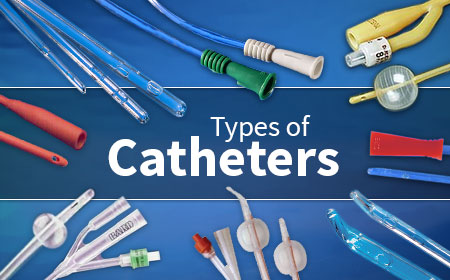
Types of Catheters
Choose a Type of Catheter
Foley Catheter (Indwelling)
Foley catheters are the most common type of indwelling catheter. They feature two separate channels (called lumens): one for draining urine, and one for inflating the balloon tip with sterile water to keep the catheter in place.
People who have mobility issues, such as quadriplegia, may use Foley catheters.
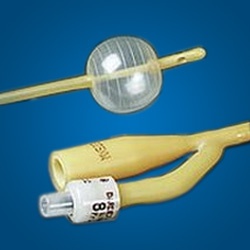
HCD can provide these catheters through insurance!
Quick Facts
- Sometimes called a “two-way Foley catheter” or “balloon catheter”
- They are usually used for a month at a time
- They carry a higher risk of infection than other catheters
- Typically prescribed to people who cannot use a catheter on their own
- Covered by Medicare, Medicaid, and some private insurance plans
Three-Way Foley Catheter
Three-Way Foley catheters function like regular Foley catheters except that they have a third channel used to irrigate the inside of the bladder. A sterile solution is flushed through the tubing to irrigate the bladder.
People who are prone to develop clots or sediment might use Three-Way Foley catheters.
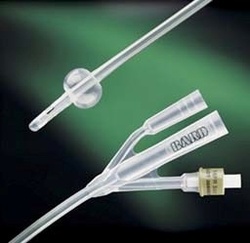
HCD can provide these catheters through insurance!
Quick Facts
- Contains an extra channel for flushing out the catheter
- They are usually used for one month at a time
- Typically prescribed for people who are at more risk for infection during use
- Covered by Medicare, Medicaid, and some private insurance plans
100% Silicone Foley Catheter
100% Silicone Foley catheters work just like other types of Foley catheters. The only difference is that they are made entirely of silicone instead of latex.
People who have allergies or sensitivities to latex use 100% Silicone Foley catheters.
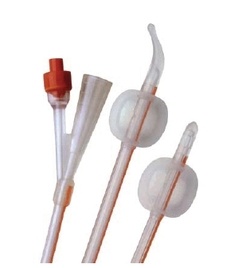
HCD can provide these catheters through insurance!
Quick Facts
- Softer and smoother than latex catheters
- Come in both two or three-way styles
- Typically prescribed for people who have sensitivities or allergies to latex
- Covered by Medicare, Medicaid, and some private insurance plans
Coated Foley Catheter
Coated Foley catheters are latex catheters that have been overlayed with another substance. Common coatings include Teflon, silicone, and silver.
Each coating provides a unique benefit to the user, the most common being more protection against infection.
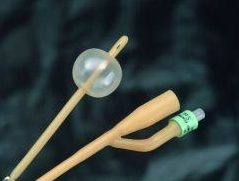
HCD can provide these catheters through insurance!
Quick Facts
- They are usually used for one month at a time
- Typically prescribed for people who are at more risk for infection during use
- Covered by Medicare, Medicaid, and some private insurance plans
Intermittent Catheter (Straight Catheter)
Unlike Foley catheters, Intermittent catheters are designed to be used once and then thrown away. They’re usually made of a special soft plastic (PVC) and a lubricant is used to make their use easy and painless.
People who have difficulty emptying their bladder use Intermittent catheters.
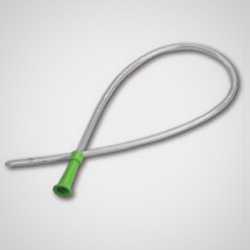
HCD can provide these catheters through insurance!
Quick Facts
- Also called straight catheters, “in and out” catheters, and “self-cath” catheters
- Should not be reused
- Less risk of infection than indwelling catheters
- Prescribed to people who have the ability to catheterize themselves regularly
- Covered by Medicare, Medicaid, and some private insurance plans
Red Rubber Catheter
Red Rubber catheters are a type of intermittent catheter. They function exactly the same, but are made of a thin rubber latex instead of plastic.
Red Rubber catheters are used by people who need intermittent catheters, but prefer red rubber latex over plastic.
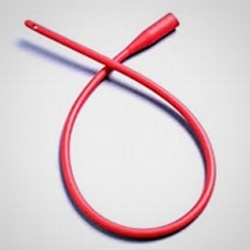
HCD can provide these catheters through insurance!
Quick Facts
- Softer and more flexible than plastic intermittent catheters
- “Classic” catheter made of natural rubber latex instead of plastic.
- Covered by Medicare, Medicaid, and some private insurance plans
Closed System/No Touch/Closed Kit Catheter
Closed System catheters are all-in-one disposable systems that include a catheter, lubricant, and collection bag. They help protect against infection by reducing exposure of the catheter to bacteria and other contaminants. ,
People who are more prone to UTIs or other infections use Closed System catheters.
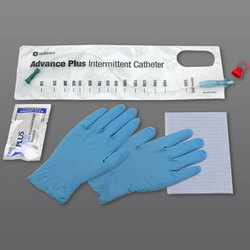
HCD can provide these catheters through insurance!
Quick Facts
- Comes pre-lubricated and ready for use
- Designed to reduce contact between the catheter and outside sources, reducing the potential for infection
- Collects urine in a sealed, disposable drainage bag
- Typically prescribed to people that are prone to UTIs or other infections
- Covered by Medicare, Medicaid, and some private insurance plans
Coude Catheter
Coude catheters have bent or tapered tips. They’re designed to help the catheter maneuver around blockages or obstructions in the urethra, such as an enlarged prostate. Coude catheters can come in many different styles, including indwelling and intermittent.
People with obstructions or blockages in the urethra use coude catheters.
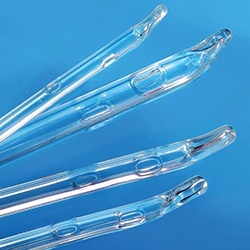
HCD can provide these catheters through insurance!
Quick Facts
- Coude tips can be on many types of catheters, including Foley, Intermittent, and Closed System
- Contain an indicator that allows the user to know the direction of the tip during use
- Typically prescribed to people experiencing a blockage or obstruction in the urethra
- Covered by Medicare, Medicaid, and some private insurance plans
Get Urology Supplies Delivered to Your Door
Accurate Orders | Fast Delivery | Product Expertise
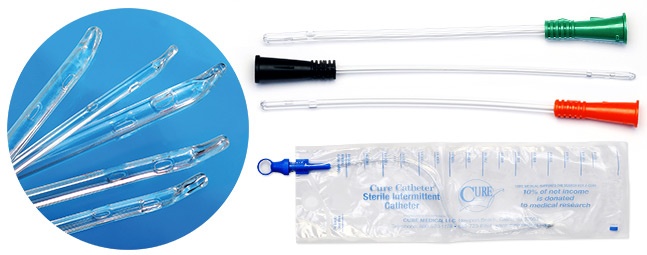
Disclaimer:
Unless otherwise noted, the recommendations in this document were obtained from the sources indicated. Be advised that information contained herein is intended to serve as a useful reference for informational purposes only. HCD cannot be held responsible for the continued accuracy of or for any errors or omissions in the information. All trademarks and registered trademarks are the property of their respective owners.

